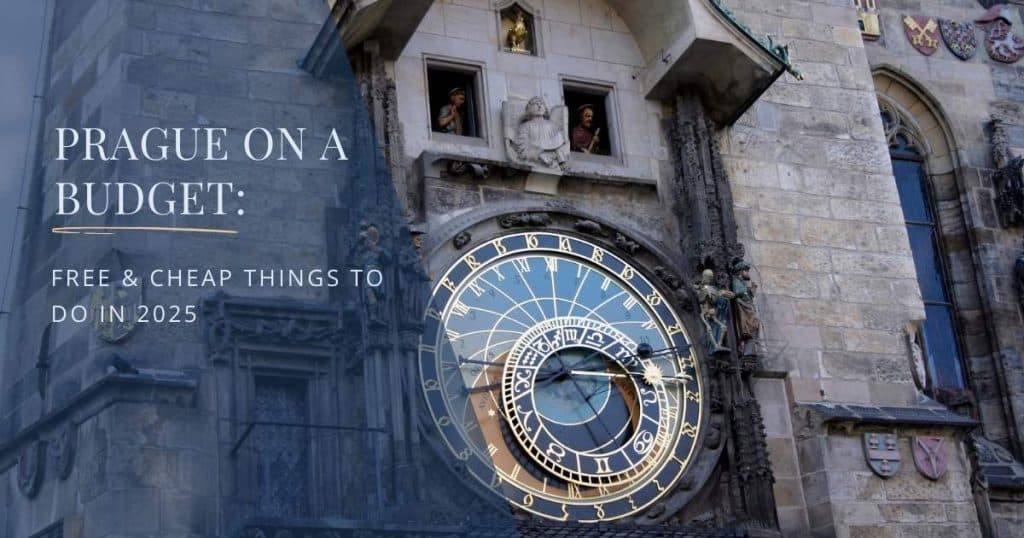🧭 More Than Just a Soak: Entering Budapest’s Bath Culture
If you’ve ever daydreamed about slipping into a steaming outdoor pool surrounded by elegant Neo-Baroque architecture or letting warm mineral waters soothe your muscles after a day of sightseeing—welcome to Budapest. But for many travelers, especially first-timers, visiting these historic thermal baths can feel more intimidating than relaxing at first.
You might be wondering: What do I wear? Where do I put my stuff? Is it weird to go alone?
You’re not alone in feeling unsure. Budapest’s thermal baths are unlike typical spas in the U.S. or other Western countries. They’re part of daily Hungarian life—equal parts wellness, socializing, and tradition. Locals come here to play chess, treat ailments, or catch up with friends, all while soaking in steaming pools rich in natural minerals.
In this guide, we’ll help you confidently navigate your first visit to Budapest’s iconic baths—from Széchenyi to Gellért—so you can enjoy every blissful minute without stress or awkwardness.
TL;DR (Too Long; Didn’t Read)
Budapest’s thermal baths are a cherished local tradition—but they can feel intimidating to first-timers. This guide walks you through everything you need to know: what to pack, how to choose the right bath, local etiquette, and how a visit typically flows. Whether you’re going solo, as a couple, or exploring culturally, you’ll feel prepared and confident to soak like a local.
Get Your FREE London Travel Map + 5 Must-Have Travel Resources!
Plan smarter, stress less, and make every trip unforgettable with these exclusive tools—100% FREE!
📩 Sign up now & download instantly!

🏛️ A Quick History of Budapest’s Thermal Baths
Hungary’s love affair with thermal water dates back over 2,000 years.
It started with the Romans, who built elaborate bathhouses in the Aquincum region (today’s Óbuda). Then came the Ottomans in the 16th century, who left their architectural and cultural imprint on many bath complexes still in use today—like Rudas and Király.
But the real golden age of bath culture flourished in the Austro-Hungarian era. That’s when grand establishments like Széchenyi and Gellért Baths were built, mixing Art Nouveau opulence with cutting-edge hydrotherapy of the time.
Today, Budapest boasts more than 100 thermal springs and around a dozen public thermal baths. But they’re more than attractions—they’re part of daily life. Elderly locals arrive for their morning soak and physiotherapy. Teens come after school to unwind. It’s a ritual. One you’re warmly invited to join.
💡 Choosing the Right Bath for Your Vibe
Each thermal bath in Budapest offers a slightly different atmosphere. Here’s how to find your best fit.
Széchenyi Baths – Grand, Social, and Iconic
If you’ve seen Instagram photos of steaming outdoor pools framed by yellow palace walls, this is it.
- Atmosphere: Lively and social, especially in peak afternoon hours.
- Facilities: 18 pools (both indoor and outdoor), saunas, massage rooms, beer spa.
- Best for: First-timers, couples, people who enjoy a bustling environment.
- Local Tip: Head early in the morning for a quieter soak and stunning sunrise light.
Gellért Baths – Art Nouveau Elegance and Indoor Serenity
Located inside the famous Hotel Gellért, this bath feels like stepping into a cathedral of wellness.
- Atmosphere: Refined, quiet, romantic.
- Facilities: Indoor mosaic-tiled pools, outdoor wave pool (seasonal), saunas.
- Best for: Design lovers, couples, or those seeking a calmer experience.
- Note: Some areas have a dress code requiring swim caps, so pack one just in case.
Rudas Baths – Traditional Turkish Vibes + Rooftop Views
This 16th-century bath was built by the Ottomans and still features a stunning central dome with octagonal pool. It also boasts a panoramic rooftop hot tub with views over the Danube.
- Atmosphere: Historic and atmospheric. Gender-separated bathing on weekdays in the Turkish section.
- Facilities: Steam rooms, rooftop hot tub, hot/cold plunges.
- Best for: Early risers, architecture fans, and those seeking a more cultural or local flavor.
- Tip: The weekend night spa session (open until 3am) offers a magical, candle-lit ambiance.
Lukács, Király & Others – Local Favorites
If you’re looking to escape the tourist crowds and blend in with locals, consider:
- Lukács Baths: Known for its healing properties and medical treatments.
- Király Baths (currently under renovation as of 2025): Another Ottoman-era gem, but check reopening status before visiting.
🛁 Budapest Thermal Baths at a Glance
Not sure which bath suits your style? Here’s a quick side-by-side comparison of Budapest’s most popular thermal baths. This overview highlights the vibe, facilities, accessibility, and the best times to visit—so you can pick the one that matches your trip, whether you’re seeking family fun, historic ambiance, or a romantic soak.
| Bath | Vibe | Indoor / Outdoor | Rooftop / Views | Family-Friendly | Accessibility | Price Range | Best Time to Go |
|---|---|---|---|---|---|---|---|
| Széchenyi | Lively, social, iconic | Both (18 pools) | No | Yes – large outdoor areas | Wheelchair & stroller accessible | ~€22–29 | Early morning for quiet; afternoons for buzz |
| Gellért | Elegant, romantic, calm | Mainly indoor + seasonal wave pool | No | Yes – but quieter, refined atmosphere | Good accessibility; some swim-cap rules | ~€24–28 | Weekdays for design lovers; winter for cozy indoor soak |
| Rudas | Historic, atmospheric | Indoor + rooftop hot tub | Yes – panoramic Danube views | Limited – best for adults | Less accessible (historic structure, stairs) | ~€25 | Sunrise or night spa (Fri–Sat until 3am) |
| Lukács | Local, healing, low-key | Both | No | Yes – popular with locals & families | Decent accessibility | ~€16 | Weekdays for fewer crowds; mornings for therapy vibe |
Need More Help Planning Your Trip?
Best Time to Visit Budapest’s Thermal Baths
The “right” time depends on your vibe—quiet recovery, family-friendly downtime, or atmospheric night soaking. Use these quick rules to match your mood and avoid crowds.
Time of Day: Mornings vs Afternoons vs Evenings
- Early mornings (opening–10:00): Calmest, cleanest, and best for photos. Ideal for families with kids and introverts who want space.
- Late mornings to mid-afternoon: Livelier social vibe; expect more visitors, especially at Széchenyi.
- Evenings (after 18:00): Softer light, fewer families, relaxed mood—great for couples. Pools feel extra toasty in cool weather.
Days of the Week: Weekdays vs Weekends
- Weekdays: Lower prices and shorter queues; best for first-timers who want a smooth experience.
- Weekends & holidays: Peak crowds and higher demand for cabins and massages—book ahead or go early.
By Season: What Each Month Brings
- Winter (Dec–Feb): Magical steam clouds in outdoor pools; fewer tourists on weekdays. Bring flip-flops and a warm robe for transitions.
- Spring (Mar–May): Pleasant temps and balanced crowds; great for combining city walks with a mid-day soak.
- Summer (Jun–Aug): Long days and highest footfall. Go early morning or late evening to dodge heat and crowds.
- Autumn (Sep–Nov): Comfortable water-to-air contrast, especially evenings; shoulder-season sweet spot for couples.
Night Spa Sessions (Selective Baths)
- Rudas Night Spa (Fri–Sat): Candle-lit atmosphere and rooftop views over the Danube—more adult-oriented. Expect limited availability; book ahead.
- Tips: Arrive 15–20 minutes early for check-in, bring minimal valuables, and plan a warm layer for post-soak air.
Quick picks: Families—weekday mornings. Cultural explorers—weekday late afternoons or autumn evenings. Couples—winter evenings or night spa sessions. First-timers—weekday mornings at Széchenyi or Gellért for the easiest flow.
🎒 What to Pack (And What You Can Rent There)
Worried about what to bring? No stress—here’s what you actually need:
Essentials:
- Swimsuit: Mandatory at all baths (including rooftop pools).
- Towel: You can rent one on-site, but many find them thin and scratchy—bring your own if possible.
- Flip-flops or slip-ons: Required in some facilities, but a smart move for all (slippery floors!).
- Waterproof bag or phone pouch: Useful if you plan to bring your phone poolside.
- Swim cap: Required only for lap swimming (especially at Gellért and Széchenyi).
Optional:
- Shower toiletries: Body wash and shampoo aren’t always provided.
- Reusable water bottle: Hydrate between steams and saunas.
Pro Tip: Renting is possible (towel, robe, swimwear), but it often involves queues and deposits. Travel light—but smart.
🧼 Bath Etiquette 101 – Don’t Be That Tourist
Hungarian spa culture is welcoming, but there are some unwritten rules. Here’s how to be a courteous guest:
- Shower before entering: Non-negotiable. It’s about hygiene and respect.
- Don’t splash or dive: Thermal baths aren’t swimming pools. Soak, float, or chat—quietly.
- Mind the zones: Saunas and steam rooms are for relaxation. Keep voices low and phones away.
- Respect clothing rules: Swimwear is required. No nudity unless specified (which is rare in public baths).
- Photograph politely: Always ask if people are in your frame. Indoor pools may restrict cameras altogether.
Following these basics ensures you’ll blend right in—and earn smiles from the locals.
🕐 How a Visit Usually Flows (So You Know What to Expect)
Wondering what actually happens once you get through the doors?
Step-by-Step Walkthrough:
- Buy your ticket (online or at the counter). Choose between a locker (small storage) or cabin (changing room with privacy).
- Get your electronic wristband, which serves as your key and entry pass.
- Find your locker/cabin, change, and shower.
- Explore the baths: Alternate between warm pools, cold plunges, and steam/sauna rooms.
- Wrap up with a final rinse, then dry off and re-dress in the cabin or locker area.
Time tip: Most visitors spend 1.5–3 hours. Morning visits are calmer, while afternoons are livelier.
Pro tip: Want an easy cashless experience? Most baths accept credit cards, but for smaller purchases (like food kiosks), having some Hungarian Forint can be handy. Consider using the Wise travel card to avoid high exchange fees.
💧 Want a Day-by-Day Budapest Itinerary Without the Hassle?
Ready to relax in Budapest’s iconic baths but not sure how to fit them into your trip? Let our free AI-powered itinerary builder craft a personalized plan just for you — including spa visits, sightseeing, and local gems you won’t want to miss.
✨ Soak up the experience — your custom Budapest journey starts here:
Discover Our Ultimate Collection of Travel Maps
💶 Tickets, Booking & Budget Tips
Thermal bath entry in Budapest is surprisingly affordable considering the experience you’re getting—ancient architecture, natural healing waters, and spa facilities all rolled into one.
Entry Costs
- Széchenyi Baths: Expect to pay between 8,400–11,200 HUF (€22–29), depending on whether you choose a locker or a private cabin and the day of the week.
- Gellért Baths: Around 9,400–11,000 HUF (€24–28).
- Rudas Baths: Roughly 9,500 HUF, with additional rooftop access or wellness extras sometimes adding cost.
- Lukács Baths is more budget-friendly, starting around 6,000 HUF.
Prices are typically higher on weekends and holidays, so weekday visits are more economical.
Booking Tips
- Buy tickets online to skip the queues—especially at Széchenyi and Gellért.
- Some providers offer fast-track access, spa + massage bundles, or sunrise/sunset special access (like Rudas’s sunrise bath ticket).
- Save with bundled passes when available (e.g., bath + massage, or entry + cabin).
Currency Note
Always check whether you’re being charged in HUF or converted to EUR on-site. To avoid poor exchange rates and hidden fees, use a Wise card for card payments or ATM withdrawals—it ensures fair conversion and minimal charges.
🌿 Add-Ons Worth Considering (Massages, Saunas & Rooftops)
If you want to elevate your spa experience, consider these upgrades.
Massages
- Offered in 20–70-minute sessions.
- Common styles include Swedish, Thai, aroma oil, or medical massage.
- Advance booking is recommended, especially in high season.
Price range: from 6,000 HUF (~€15) for basic massages to 18,000+ HUF (~€45+) for longer aromatherapy sessions.
Saunas & Steam Worlds
- Most baths have multiple sauna types: Finnish, infrared, aroma steam, or even cold rooms.
- Follow the recommended sauna-cold shower cycle for maximum benefit.
- Nudity is not required—swimwear is usually worn, or towels wrapped in designated zones.
Rooftop Pools & Views
- Rudas Baths’ rooftop tub offers a breathtaking view over the Danube and Buda hills.
- It’s available with a premium ticket or during night spa sessions (Fridays & Saturdays).
🛁 Ready to soak it all in?
To make the most of your spa day in Budapest, you can pre-book experiences like skip-the-line bath entry, wellness packages, or guided cultural walks that end in thermal relaxation. Trusted platforms like GetYourGuide and Viator offer curated options for Széchenyi, Gellért, and more—plus extras like massages and wellness add-ons.
✨ Can’t find availability? Check the official website of your preferred bath for real-time hours and ticket info.
🌐 Language, Accessibility & Local Tips
Language Barrier?
- Most ticket staff speak basic English.
- Signage is often bilingual (Hungarian/English), but occasionally sparse inside.
- If in doubt, observe locals or ask attendants—they’re generally helpful.
Accessibility & Family Friendliness
- Széchenyi and Gellért are the most wheelchair-accessible and stroller-friendly.
- Rudas is more historic and may have stairs and less accessible features.
- Most baths welcome families, but check age restrictions: kids under 14 may not be allowed in thermal sections or saunas.
Lockers vs. Cabins
- Lockers: Small, shared dressing area. Cheaper.
- Cabins: Private changing space—ideal for couples, solo travelers with valuables, or those needing privacy.
- Use your wristband to lock/unlock them electronically.
🧖♀️ Can You Visit Alone? (Absolutely — Here’s How)
Yes! In fact, many locals go alone for a bit of me-time or a therapeutic soak.
- Ideal for solo travelers: It’s calming, culturally enriching, and allows you to move at your own pace.
- Bring a book, journal, or just your thoughts—great for mindful reflection.
- Avoid peak hours if you’re introverted and want a quieter vibe.
Don’t feel awkward—Hungarians won’t bat an eye at solo guests.

Test Your Travel Smarts with Our Quizzes!
Think you know your way around the world? From cultural traditions to hidden gems, our short and playful travel quizzes are the perfect way to challenge yourself, learn something new, and maybe even spark your next adventure. Great for anyone who loves a bit of travel trivia fun!
✨ Memorable Mentions – Unique Spa Experiences in Budapest
While the classics steal the spotlight, here are a few special extras worth knowing about:
- Sparty (Széchenyi Night Spa Party): Budapest’s famous thermal bath party, held Saturday nights with DJs, lights, and a younger crowd.
- Sunrise at Rudas: Visit early (from 6am) and enjoy serene, steamy water as the city wakes up.
- Thermal Water Drinking Halls: At Lukács Baths, visitors can drink the healing waters as part of a prescribed regimen.
- Ice Plunge Challenge: Alternate between saunas and ice-cold pools to mimic traditional Hungarian bath cycles—an invigorating ritual!
🧳 Conclusion – Soak It In (Without the Stress)
Budapest’s thermal baths are more than tourist checkboxes—they’re gateways to cultural connection, relaxation, and timeless tradition. Whether you’re soaking solo at sunrise, lounging with your partner under the sky, or just trying to warm up on a winter afternoon, these iconic spas invite you to slow down, tune in, and experience Budapest the way locals have for centuries.
By knowing what to expect—and what to bring—you’ll skip the stress and dive straight into the magic.
💬 Have you visited one of Budapest’s baths before? Got a favorite? Share your story in the comments—we’d love to hear how you soaked it all in.
Your Ultimate Travel Companion
Frequently Asked Questions About Visiting Budapest’s Thermal Baths
Q: Do I need to book Budapest thermal bath tickets in advance?
A: While not mandatory, booking in advance—especially for popular baths like Széchenyi or Gellért—is highly recommended to avoid queues and secure your preferred time slot. Online tickets (e.g. using a platform like Viator) often allow you to skip the line and choose between locker or cabin access.
Q: What’s the difference between a locker and a cabin at the baths?
A: A locker is a small, secure compartment in a shared dressing area for storing your belongings. A cabin, on the other hand, is a private changing room that doubles as storage. Cabins are ideal for families, couples, or solo travelers who prefer privacy.
Q: Are Budapest’s thermal baths suitable for children and families?
A: Yes, many of the thermal baths welcome families with children. Széchenyi and Gellért are both family-friendly, with large pools and outdoor space. However, some spa areas (like hot thermal pools or saunas) may have age restrictions, so check in advance.
Q: What should I bring when visiting a Budapest thermal bath?
A: Bring a swimsuit, towel, flip-flops, and toiletries. A swim cap is required only for lap swimming in certain pools. You can rent towels or buy swimwear on-site, but bringing your own is often more comfortable and cost-effective.
Q: Are the baths open year-round?
A: Yes, Budapest’s thermal baths are open throughout the year. Outdoor pools at places like Széchenyi are heated and operational even in winter, offering a unique cold-weather soaking experience surrounded by steam.
Q: How much does it cost to visit a Budapest bath?
A: Prices typically range from 8,000 to 11,000 HUF (€20–30) depending on the bath, day of the week, and whether you choose a locker or cabin. Weekends and holidays may be slightly more expensive.
Q: Can I use a Wise card in Budapest for bath entry or nearby expenses?
A: Absolutely. Most baths accept card payments, and Wise is a great tool for avoiding hidden exchange fees when paying in Hungarian Forint. It’s also handy for withdrawing local currency at fair rates.
📌 Love cultural travel? Explore more ideas on Pinterest →













